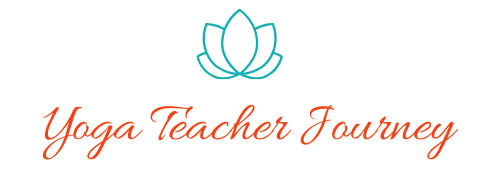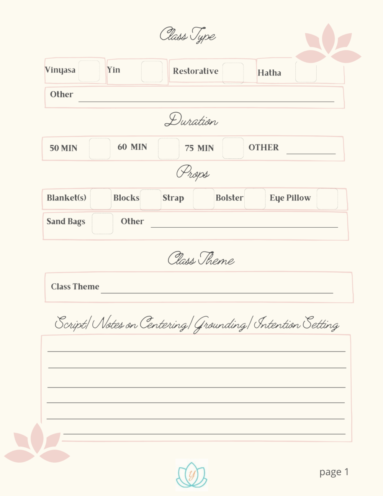The whole reason we are here right now – you and I – is due to a lack of confidence on some level, when coming out of yoga teacher training (YTT). Read my story here. Please know you are 100% not alone! Here’s why:
In a 200-hour training, there is very little time for trainees to actually teach. As much as the program would like to provide their trainees with experience and a fulfilling teaching practicum, it seems many are consistently falling short. Why is this happening?
RYS STANDARDS
The Yoga Alliance Elevated Standards require an RYS 200 (Registered Yoga School) to teach this core curriculum.
As you can see, 50 hours of a 200-hour training are to be spent learning “Professional Essentials.” These cover:
Teaching Methodology
- Sequencing
- Pace
- Environment Cueing (verbal, visual, physical)
- Class management
Professional Development
- Yoga-related professional organizations, including the Yoga Alliance credentialing process
- Ethical Commitment, including Scope of Practice, Code of Conduct and Equity Position Statement
- Lifetime of learning and continuing education
- General professionalism, including timeliness, consistency, cleanliness
- Marketing and promotion
- Liability insurance, waivers, invoicing
Practicum (Practice Teaching)
- Knowledge, skills, experience across 12 key competencies
- Mentorship component, incl. apprenticeship, feedback
12 Key Competencies
- Asana, Pranayama, and Subtle Body, Meditation
- Anatomy, Physiology, Biomechanics
- History, Philosophy, Ethics
- Teaching Methodology, Professional Development
Fifty hours of Professional Essentials sounds like a lot, right? But here lies the problem. It’s not 50 hours of practice teaching. Those fifty hours include everything listed above.
No wonder so many trainees come out of their 200-hour training lacking confidence. Those who went on to invest in an additional 300-hour training, or who took a 500-hour training all at once may be facing the same conundrum.
This is why for many, bridging the gap is necessary.
Fortunately, there are MANY ways to gain experience teaching and CONFIDENTLY pursue your professional teaching goals. Continue reading for options to gain experience.
WHY DO WE NEED EXPERIENCE?
Experience doing anything builds confidence. We can use the analogy of a child first learning to ride a bike. It’s super scary taking off those training wheels for the first time. You require guidance and support from others to send you on your way. But once you’ve been successful makes the next time a little less scary. Before you know it, you’re doing it on your own with no fear.
Teaching yoga is similar and before you know it, you’re teaching without training wheels!
Keep reading for resources and to learn several methods of gaining teaching experience.
THE FEAR FACTOR
What are your biggest fears about teaching? Here are the top 6 answers I’ve heard from new yoga teachers:
- Fear of Public Speaking
Psycom.net reports that 75% of the population has a fear of public speaking, called Glossophobia. Symptoms of Glossophobia include increased blood pressure, rapid heart rate, sweating, and a feeling of panic. It’s no wonder that new yoga teachers experience some of these symptoms since for most people it comes from feeling unprepared. Some ways to overcome or lessen these feelings are to practice your sequence repeatedly and practice cueing the sequence out loud. See more about the 3 Ps of public speaking below. - Imposter Syndrome
Imposter Syndrome is also a very real thing and VERY common. Why not? You are in fact new to this role. It will take a little while before you feel completely comfortable in it but remember one very important thing: YOU are the subject matter expert! Most likely YOU know more about yoga and teaching yoga than anyone else in the room. Remind yourself of all you’ve learned in your YTT! - Forgetting Part of the Sequence
When you get nervous or experience fear symptoms you may also lose your train of thought and the next step in your sequence. Remember, it’s actually a good thing to have moments of pause throughout your class. A pause provides students time to breathe and feel the posture in their bodies. Take whatever time you need to get back on track. Most likely students will think it was a planned part of the class.
Forget part of the sequence and move on before realizing it? That’s okay too. If you’re at a place where you can get students back on track and flow through the part you missed, great. Don’t worry if not. We ALL do this occasionally. Mistakes are part of the human experience. You are not expected to be above that. Laugh it off and move on! You will be more relatable to your students who have also made many mistakes in their lives. Really, it’s okay. - Giving Poor Cues
Our next fear is giving incorrect cues. It’s okay to correct yourself during the class. Did you say right instead of left? Inhale instead of exhale. So what! Correct yourself and move on. But don’t overly apologize. Saying “sorry” over and over again draws more attention than making the error. We learn from our mistakes. This is ALL part of the process of becoming more confident. - Appearing Nervous and Lacking Confidence
Being your authentic self will make you more comfortable at the front of the class. Read Yoga Teacher Journey’s 7 Strategies to Becoming an Authentic Yoga Teacher. Don’t try to be someone or something you’re not. It’s okay to appear nervous and even to say you are new at this and a little nervous out loud. But know there are tactics you can take to help you feel less nervous and vulnerable. - Students Won’t Return to Your Class
The reality is some students won’t return to your class. It may be because they didn’t fit in with the vibe of the class or it could be a million other reasons. The least of these being because they didn’t like you personally. It is natural and crosses every yoga teacher’s mind, but we all need to let it go. Ninety-nine-point nine percent of the time it has something to do with them (their schedule, their health, other commitments, etc.) and NOT you.

TAKING STEPS TO BRIDGE THE GAP
The 3 Ps
Have you heard of the 3 Ps of public speaking? As The Knowledge Academy explains, the 3 Ps are prepare, practice, and present. A LinkedIn blog post has to say this: https://www.linkedin.com/pulse/3-ps-public-speaking-veronica-harth/ which can be applied to teaching a class of yoga students. Again, remember that in time, when the training wheels come off, you’ll be confidently teaching without these aids.
Using Notes
Aids include notes about your sequence that you can refer to if you lose your train of thought. Either writing it out or using diagrams to help you remember the flow. You’ll know these are no longer needed when you stop looking at them. Just knowing they are there to assist you will give you more confidence. Try YTJ’s Yoga Class Planning Template.
Additional Training
Consider taking other training courses to immerse yourself more deeply in the realm of yoga. Interested in learning more about Yin or Restorative Yoga? Somatic Healing, Yoga Therapy, Trauma Informed, or Meditation? Prenatal or Children’s yoga? Participating in other trainings will allow you to surround yourself with other like-minded yogis with whom you can share and learn from. Check out My Vinyasa Practice’s online offerings for yoga teachers.
Advanced Teacher Training
Advanced teacher training can also help to build confidence. If you’re at the RYT 200 level, consider advancing your training to the next step and enrolling in a 300-hour YTT. More knowledge in the areas of anatomy, alignment, and sequencing, (among other topics) will only help to build your confidence.
MORE OPTIONS
Coaching
Still need preparation and practice? Enlist the help of a yoga teacher coach like me! Meet with me virtually through Zoom, ask as many questions as you’d like to clarify uncertainties, or use the entire allotted time to teach to me and receive feedback. You can schedule a session here. Don’t see a time slot that works with your schedule? Contact me here to schedule your one-on-one session.
Freebie!
If you haven’t already done so, request Yoga Teacher Journey’s free guide to building and teaching with confidence today. This guide offers many suggestions to help prepare you to teach with confidence!
Other Resources
Yoga Teacher Journey’s Teacher Resources
Brett Larkin’s Top 5 Biggest Fears of New Yoga Teachers
https://www.yogabycandace.com/blog/yoga-teacher-addressing-fear-of-teaching





